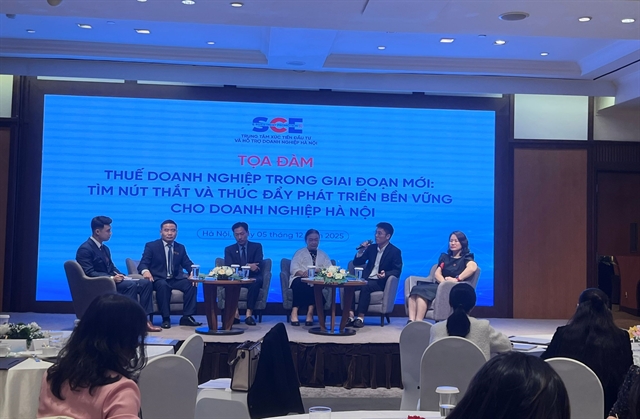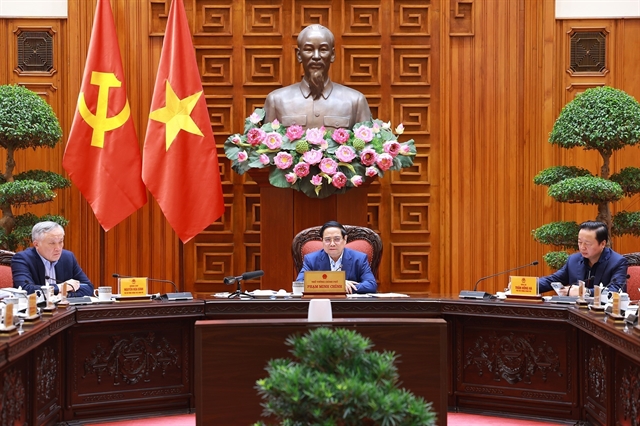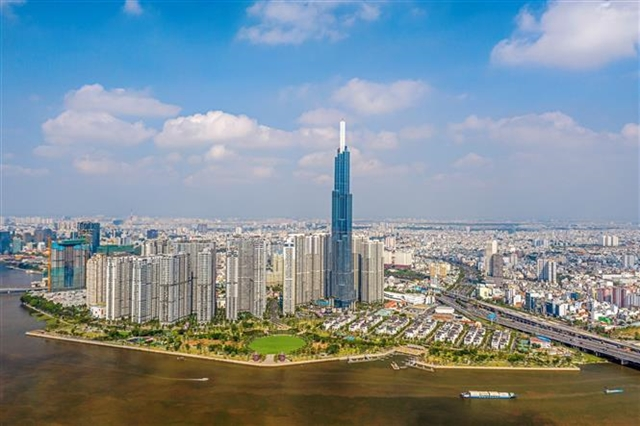 Economy
Economy

If banks failed to increase their capital, it would have a strong negative impact on their credit plans. They would not be able to serve the economy as well as they ought to.
 |
Compiled by Thiên Lý
At a recent meeting Vietinbank chairman Nguyễn Văn Thắng said increasing the lender’s legal capital is one of the most urgent tasks.
If it cannot do so in the first quarter its capital adequacy ratio (CAR) would go below the minimum level stipulated by the State Bank of Việt Nam (SBV) and under Basel II norms, he said.
CAR is expressed as a percentage of the bank’s capital to its risk-weighted assets and is one of the main metrics used to promote the stability and efficiency of financial systems.
The SBV has issued a circular stating banks must maintain a CAR of at least 8 per cent starting in 2020.
The new circular will replace Circular 13/2010/TT-NHNN that stipulates a CAR of at least 9 per cent.
According to a recent report by the National Financial Supervisory Commission (NFSC), the average CAR of the banking sector has been consistently falling since 2017.
It had dropped from 11.6 per cent at the end of 2016 to 11.1 per cent at the end of last year, and is expected to go further down in the near future.
Analysts say this is because banks’ assets have grown much more rapidly than their equity.
In 2016 the sector’s total assets went up by 16 per cent but chartered capital by only 6.11 per cent.
In 2017, all big state-owned commercial banks including VietinBank, Vietcombank and BIDV had total assets exceeding VNĐ1 quadrillion after rising by 9.3 per cent while their equity grew by only 4.6 per cent.
Experts warn that when BASEL II norms are applied banks’ CAR will plunge due to an increase in the quantum of their risky assets.
Meanwhile, the group of State-owned banks have average CAR of 9.69 per cent, close to the stipulated minimum.
It will plunge below 8 per cent when BASEL II standards are applied.
If they fail to increase their capital, it will have a strong negative impact on their credit plans. Since they are the largest banks by a wide margin, this will have an impact on the entire banking sector. They would not be able to serve the economy as well as they ought to, according to an SBV official who asked not to be named.
As for state-owned banks, Vietcombank bears the least pressure because it has many options for raising capital while the time is not limited.
Meanwhile, Vietinbank needs to improve its CAR soon and increase tier-1 capital more than tier-2 capital.
Of three state-owned banks, BIDV has the lowest CAR. It has no more room to increase tier-2 capital, therefore, it has the fewest options for raising capital.
As the government has decided not to pump more capital into state-owned banks, it still requests the banks to raise capital to satisfy requirements in Basel 2. Private capital will play the key role.
The State giants have made many efforts to augment their capital, but with modest results.
A top Vietinbank executive said the bank now had no choice except to issue shares to existing shareholders to hike its charter capital.
He also suggested that his bank should be allowed to issue bonus shares and supplement charter capital as proposed to the central bank and the Government.
At its meeting on January 12 Vietcombank announced some ambitious targets: achieving asset growth of 14 per cent; increasing deposits by 17 per cent; reducing bad debts by 1 percentage point; and achieving pre-tax profit of VNĐ12 trillion.
It is also committed to soon achieve Basel II norms as required by the central bank.
A Vietcombank official admitted that while the lender has taken many initiatives that have significantly improved its business performance, it has not increased its charter capital to optimum levels.
The situation is similar at Agribank and BIDV.
Analysts said the main task in front of the banks now is to increase their charter capital to not only meet the SBV’s requirements but also to realise their other important goals such as ensuring credit growth, improving their financial capacity, getting more foreign investors, and expanding to overseas markets since the Vietnamese banking industry is deeply integrating into the global financial market.
But they stressed the need for the central bank to support them, saying it should allow the State-owned banks to retain some of their earnings to supplement their capital.
Rubber giant cannot find strategic investors
Late last year the government approved the equitisation plan of the Vietnam Rubber Group (VRG).
It envisions the State retaining three billion shares, equivalent to 75 percent of VRG’s chartered capital of VNĐ40 trillion (US$1.76 billion), after the equitisation.
The company will auction off more than 475 million shares, equivalent to 11.88 per cent of its capital, to the public.
Another 475 million shares will be offered to strategic investors while the remainder of the stake will be sold to the group’s employees and trade union.
The shares will be auctioned at a reserve price of VNĐ13,000 ($0.57).
At this price the company will be worth VNĐ52 trillion, and the free float, or the stocks traded in the market, will be worth nearly VNĐ6.2 trillion.
But VRG has yet to identify any strategic investor though its initial public offering (IPO) is approaching and the company will be a good buy for any investor.
One of VRG’s attractions now is that the price of latex is recovering sharply, though even if rubber prices plummet VRG’s business results and prospects are quite convincing.
Its after-tax profit in 2016 was VNĐ1.5 trillion. In the first half of last year its turnover was VNĐ10.537 trillion and pre-tax profit, VNĐ2.292 trillion.
Another very important attraction is VRG’s ownership of huge parcels of land estimated at up to 420,000 hectares.
Yet VRG has found it difficult to identify strategic investors.
Why?
Some analysts say the company’s capital is too large that not many investors have the capacity to buy even a part of the State’s stake in it estimated at VNĐ6 trillion.
In Việt Nam only a few companies in the agricultural sector have access to this kind of money.
Earnings in the agricultural sector are usually lower than those in others, also affecting the VRG’s attractiveness to investors.
The company is a behemoth with a complex organisational structure, which intimidates some investors. It has 124 member units including 75 second-class and 48 third-class enterprises.
The company has non-core investments in 17 enterprises involved in hydropower, tourism, real estate, cement, and securities, while the Government has asked it to focus on growing rubber, exploiting latex and processing rubber wood.
Some analysts however said the biggest obstacle is that the Government does not allow the company to sell stakes to foreign investors.
Why?
Its possession of many large land parcels in premier locations in major cities is the foremost reason.
Besides, VTG also has 120,000 hectares in Laos and Cambodia, and any sale of stake requires permission from the governments of those two countries.VNS




